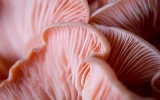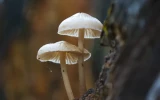13 Oyster Mushroom Growing Problems & How To Fix It
Oyster mushrooms are a favorite among mushroom growers due to their ease of cultivation and delicious taste. However, problems can arise during the growing process. In this article, we'll look at 13 of the most common oyster mushroom growing problems and how to fix them.
Oyster mushroom growing problems, including contamination, poor ventilation, incorrect temperature, insufficient humidity, inadequate light, and overcrowding, can be prevented by knowing the appropriate environment for the mushrooms. Know the proper watering and harvesting to avoid fruiting problems of the mushrooms.
Oyster mushrooms require at least 4-6 hours of light per day to grow properly. If you can't provide enough light, what's a good alternative? Let's find out the answer to this and all the other issues listed above.
Summary
- Regularly clean and sanitize the growing containers, tools, and any other equipment used in the growing process.
- Make sure that there is enough airflow in the growing area and consider adding fans or other air circulation equipment if necessary.
- Monitor the soil moisture level in the growing containers regularly to ensure that the oyster mushrooms are receiving enough water.
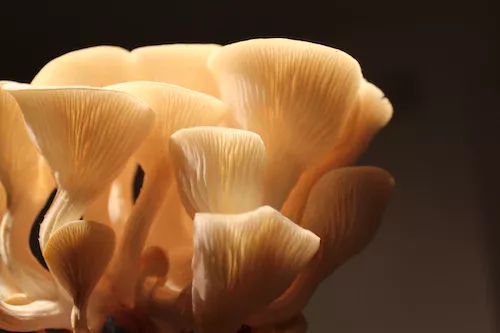
On this page:
How to Solve 13 Oyster Mushroom Growth Issues
1. Contamination is a common problem for oyster mushrooms
Contamination can be caused by bacteria, mold, or other fungi.
-
If you notice contamination in one of your growing containers or bags, isolate it immediately. This will prevent the contamination from spreading to other containers or bags.
-
If contamination is widespread, you may need to sterilize your growing area, containers, and equipment to eliminate the contaminants. This can be done using heat or chemical treatments.
-
Clean and disinfect your growing area and equipment regularly. Use a solution of hydrogen peroxide, vinegar, or other disinfectants to clean surfaces.
-
In some cases, fungicides can be used to control contamination. However, it's important to use fungicides that are safe for use on oyster mushrooms and follow the instructions carefully.
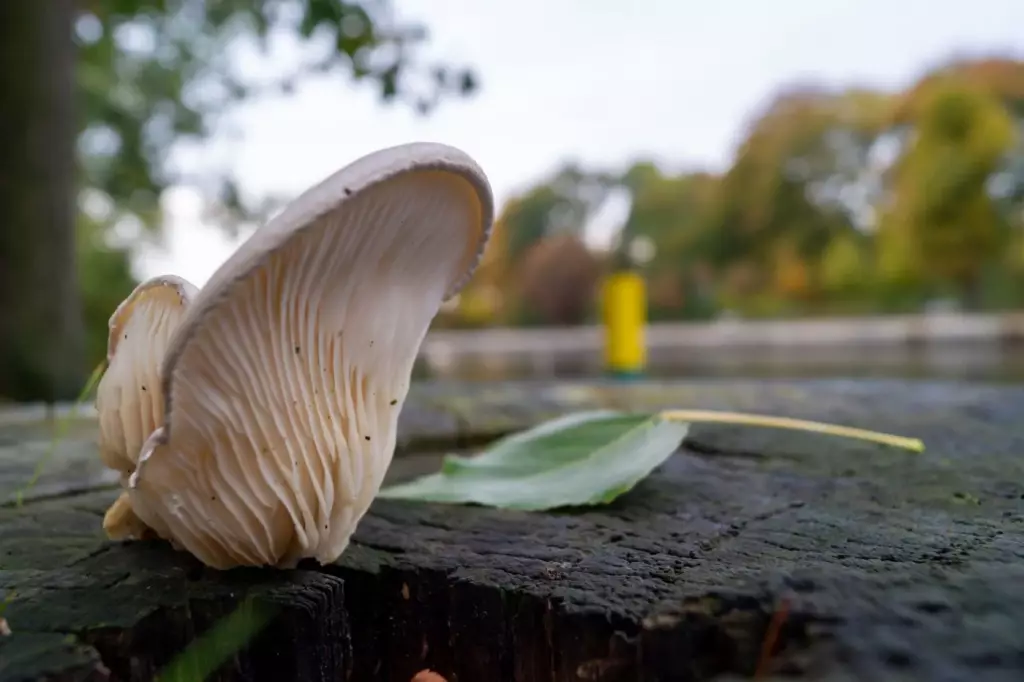
2. Poor ventilation can be a hindrance to oyster mushroom growth
Oyster mushrooms require proper air circulation to grow properly. Poor ventilation can result in slow growth, a low yield, and an increased risk of contamination.
- Increase the airflow in your growing area by opening windows, installing fans, or using air conditioning.
- If growing in containers or bags, add more air holes to increase airflow.
- Monitor CO2 levels regularly and, if necessary, introduce fresh air into the growing area.
3. Incorrect temperature can affect oyster mushroom’s growth
Oyster mushrooms grow best at temperatures between 20 and 25°C. If the temperature is too high or too low, the growth and yield of the mushrooms will be affected.
-
If you have heating or cooling systems in your growing area, adjust them to maintain the ideal temperature range for oyster mushrooms. Use a thermostat to control the temperature and prevent it from getting too hot or too cold.
-
If your growing area is located in an area with extreme temperatures, use insulation to help maintain a stable temperature range. This can be done by insulating the walls, floor, and ceiling of the growing area.
-
If your growing area is too hot, use a cooling system, such as fans, air conditioning, or misting systems, to cool down the environment.
4. A lack of humidity may hinder the development of oyster mushrooms
Oyster mushrooms require high humidity levels for proper growth. If the humidity is too low, the mushrooms may not develop properly, and the yield may be reduced.
-
If the humidity levels in your growing area are too low, use a humidifier to add moisture to the air. Set the humidifier to maintain humidity levels between 80-95% for optimal oyster mushroom growth.
-
If you're growing oyster mushrooms in a small area, you can use a humidification chamber to maintain high levels of humidity. This can be done by placing a container of water in the chamber or by using a humidifier.
5. Overwatering can have an impact on the development of oyster mushrooms
Overwatering can lead to waterlogged substrates and promote the growth of harmful bacteria and molds.
- Reduce the frequency of watering to avoid saturating the substrate with water.
- Oyster mushrooms need to be moist but not waterlogged. Water only when the top layer of the substrate is dry to the touch.
6. Underwatering can affect oyster mushroom growth
On the other hand, underwatering can lead to dry substrates, which can cause stunted growth and reduce yield.
- If the substrate is very dry, you may need to soak it in water to rehydrate it. Soak the substrate for several hours or overnight to ensure that it's fully hydrated before draining any excess water.
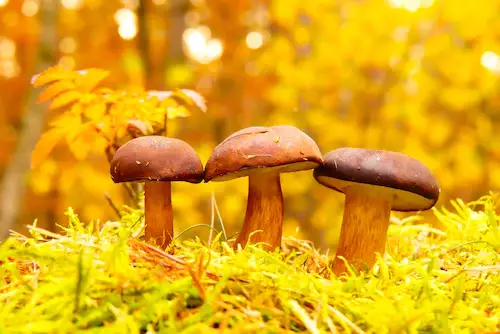
7. Poor quality substrate can lead to poor growth
The substrate is the material on which oyster mushrooms grow. A low-quality substrate can result in poor growth and yield.
-
Use a high-quality substrate that is free of contaminants and has the right balance of nutrients. Good options include pasteurized straw, sawdust, or a combination of both.
-
Make sure the substrate is not too wet or too dry and has a neutral pH.
-
If you're using a single substrate, try mixing it with other substrates to improve its quality. For example, you can mix straw with sawdust or coffee grounds to create a substrate with better nutrition and moisture retention.
8. Oyster mushrooms can develop differently if there is not enough light
Oyster mushrooms require some light for proper growth. Insufficient light can cause the mushrooms to grow thin and elongated, affecting their appearance and yield.
-
Artificial light sources such as LED lights can be used to increase light intensity. Adjust the distance between the light source and the growing area to ensure the mushrooms receive the optimal amount of light.
-
Oyster mushrooms require at least 4-6 hours of light per day to grow properly. If you're not providing enough light, increase the duration of light exposure. For indoor growing, you can set up a timer to ensure consistent light exposure.
-
Use reflective material around the growing area to increase light reflection and distribution. This can include white or reflective surfaces like Mylar or aluminum foil. This will help ensure that light is evenly distributed throughout the growing area.
9. Overcrowding can be a problem for oyster mushroom growth
If the growing containers or bags are overcrowded, it can lead to poor air circulation and an increased risk of contamination.
- If you're growing oyster mushrooms in containers, use larger containers to allow for proper spacing.
- If overcrowding has already occurred, thin out the mushrooms to provide more space for healthy growth.
- Remove any mushrooms that are stunted or not growing properly to promote the healthy growth of the remaining mushrooms.
10. Pests such as mites, flies, and snails can damage the mushrooms
Pests can be a common problem when growing oyster mushrooms, and they can damage the mushrooms or even kill the entire crop.
- Use a pest control spray specifically designed for use with mushrooms to prevent and control pests.
- Release ladybugs or other beneficial insects into the growing area to help control pest populations.
- Use physical barriers such as netting or mesh screens to prevent pests from entering the growing area.
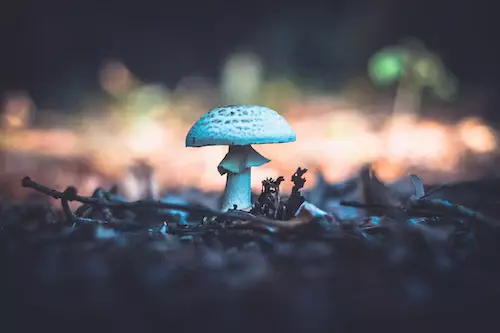
11. Obstacles to fruiting in oyster mushroom cultivation
Fruiting problems can occur for several reasons, such as low humidity, poor air circulation, and inadequate light.
- Adjust the temperature and humidity levels as necessary to promote fruiting.
- Regularly monitor the growing area for signs of fruiting, and adjust growing conditions as necessary.
12. Inconsistent watering can cause uneven growth and yield
Inconsistent watering can lead to uneven growth and lower yields of oyster mushrooms.
-
Set up a regular watering schedule for the oyster mushrooms, taking into account the temperature and humidity levels in the growing area. Stick to the schedule to ensure consistent watering.
-
Use a watering system such as a drip irrigation system or misting system to ensure consistent watering. These systems can be set up to automatically water the oyster mushrooms at regular intervals.
13. Incorrect harvesting can damage the oyster mushrooms
Harvesting at the wrong time or in the wrong way can damage the mushrooms and reduce yield.
-
Oyster mushrooms should be harvested when the caps are fully opened but before the edges start to curl up. This is typically around 10–14 days after the mushrooms first appear.
-
Harvest the mushrooms in small batches as they mature rather than waiting for all the mushrooms to mature at once.
-
After harvesting, clean the growing area thoroughly to remove any debris or mushroom residue.
